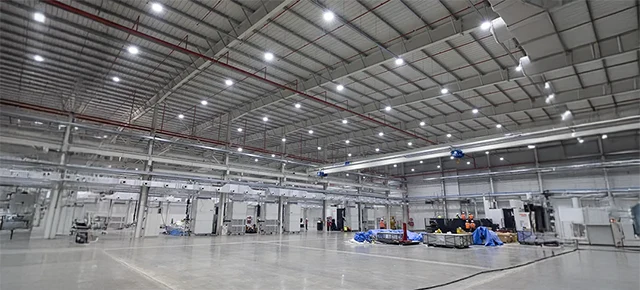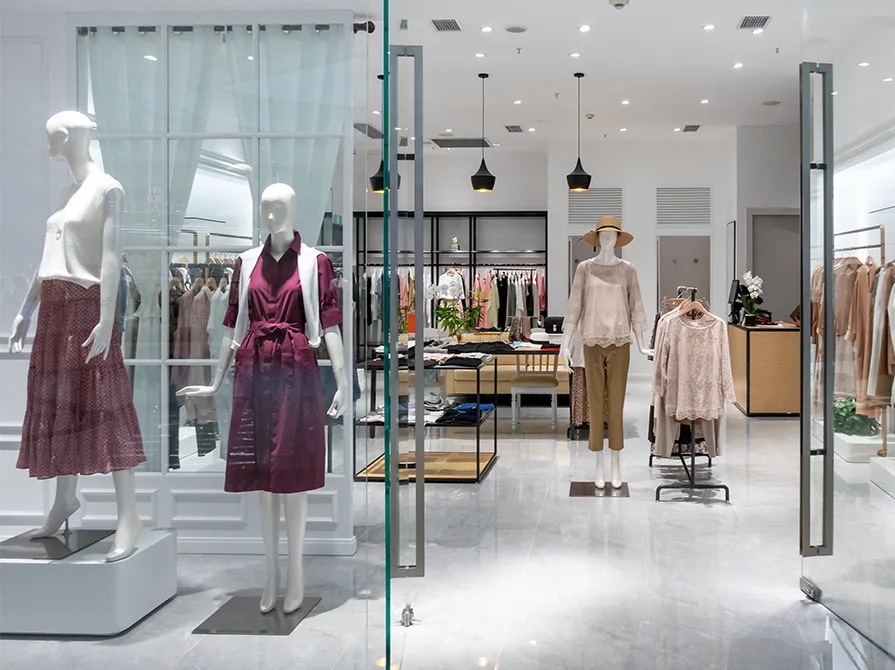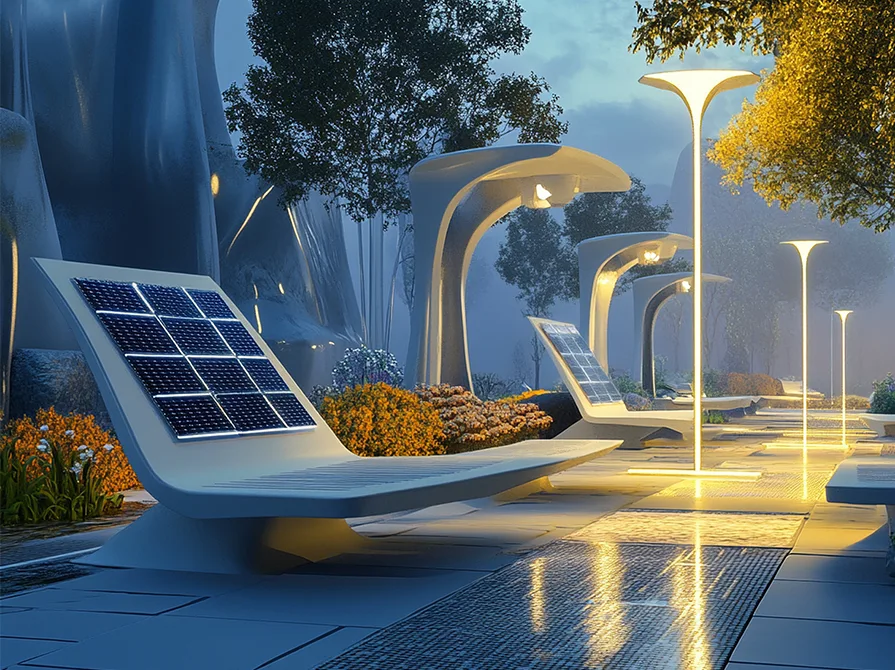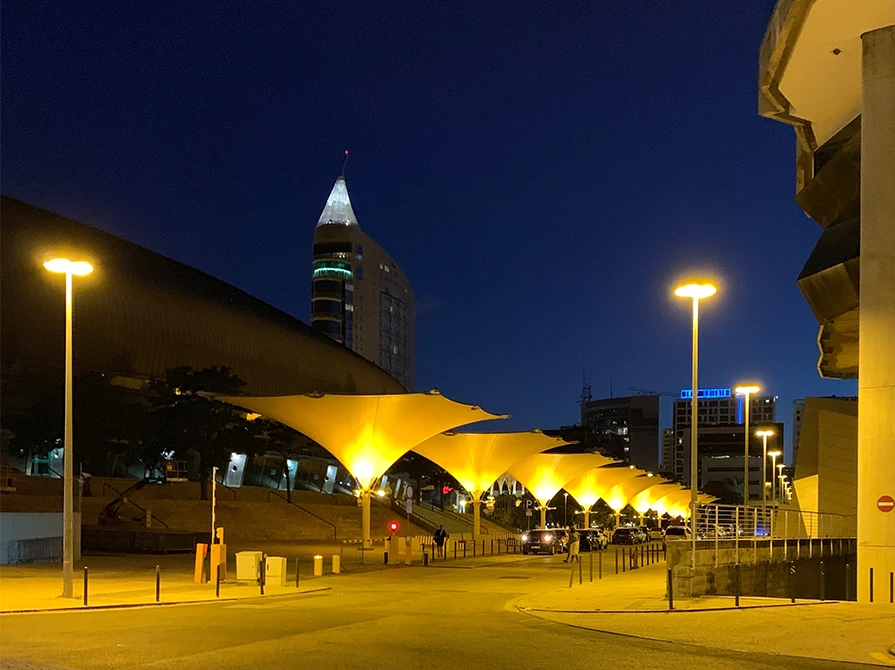


In the bustling world of manufacturing, where innovative machinery, complex processes, and a skilled workforce come together to produce goods that drive our world, factory safety for workers and labourers is not negotiable. Hence, adequate factory lighting becomes more than just a priority; it becomes imperative.
Imagine working in a factory, manufacturing unit, industrial plant, or even a warehouse, with flickering lights resulting in a dark environment that makes it difficult to see things; or in a space with high-intensity lights causing a damaging glare. Such conditions not only hamper productivity and increase health risks but also create an environment prone to accidents, putting the working labourers’ safety at risk.
In this article, we’ll delve into the types of factory lighting and the crucial role that it plays in ensuring factory safety. Further, we’ll try to understand the contributions of adequate factory lighting to creating a safe work environment that allows optimal efficiency and productivity with minimal accidents.
Factories are usually places of heavy-duty work, and each factory has its own set of requirements based on the industry. Let’s look at some different types of industrial lighting:
With the growing trend of ‘green facilities’ focused on factories being more energy efficient for the well-being of our environment, natural lighting is a big part of certain industrial factory lighting. Not only does it help these large manufacturing units and industrial facilities reduce energy costs and the carbon footprint associated with artificial lighting, but it also has a significantly positive impact on the factory workers' mood and overall health. Natural lighting also improves the attention and alertness of employees, leading to optimal productivity for the business.
However, the limited control of sunlight fluctuating and weather conditions resulting in inconsistent lighting are some negatives that can’t be ignored in an industrial setting. Further, the glare of direct sunlight can cause extreme glare, raising indoor temperatures in already hot working environments.
Hence, while it might not be suitable for all industrial facilities, natural lighting is preferred in factories with large windows or skylights, such as textile manufacturing or greenhouse facilities.
Some workplaces need sturdy, durable, and long-lasting factory lighting options to last through high temperatures and changing climates, while other industries need an artificial alternative close to natural lighting. There are several different kinds of lighting that manufacturing facilities use instead of natural lighting, some of which are listed below:
Full-spectrum Lighting:
This is the closest form of industrial factory lighting to natural lighting and is mostly used in greenhouses, aquariums, etc.
Incandescent Lighting:
These lighting solutions are an inexpensive option as the initial cost is quite low relative to other lighting types, and they emit a warm, pleasing light suitable for small-scale workshops and facilities. Since they are less energy efficient, have a short lifespan, and generate high heat, they aren’t very common in large manufacturing facilities.
Halogen Lighting:
These lights produce bright, white light that is suitable for areas where focused lighting is required. They have a longer lifespan than traditional incandescent bulbs, and their compact size makes them apt for different types of fixtures. However, these fragile forms of lighting generate a significant amount of heat and are less energy-efficient.
Fluorescent Lighting:
Energy efficient, cost-effective and with a lifespan longer than incandescent bulbs, this lighting solution provides relatively uniform illumination and is often used in manufacturing and industrial facilities. Though it does have its own set of cons, some of which include health concerns/discomfort caused by flickering, harsh glare, and inability to render colours accurately, these lights are commonly used for large production spaces like assembly lines. However, fluorescent lights can be very dangerous, if broken or leaked, as they contain small amounts of mercury vapour, phosphorus, and other hazardous substances inside them, which can pose various kinds of health risks for factory labourers. Overheated fluorescent lights can also cause fires, negatively impacting factory safety.
High-Intensity Discharge Lighting:
HID Lighting emits a powerful beam of high-intensity bright light. Not only do these lights have a high output and long lifespan, but they are also energy efficient (though not as efficient as LEDs). However, these lights take some time to reach their peak brightness, and furthermore, the maintenance of these lights is quite expensive and frequent. These high-intensity discharge lights are suitable for larger factory spaces with high ceilings, like industrial storage facilities, warehouses, etc.
LED Lighting:
These safe and durable lighting solutions are growing in popularity across sectors for their environmentally sustainable nature, energy efficiency, and longer lifespan than most lighting types. With their resistance to shock and vibration, these lights are truly durable and also provide relatively better colour rendering. Though the initial upfront cost of LED lights is more than incandescent lights, these lights will last longer and perform better in the heavy-duty work environment of most factories. Given their versatility and wide range in sizes and brightness levels, LEDs are widely used across industrial factories, including electronic factories, automotive facilities, etc.
Hence, several factors influence the lighting requirements for different factories across industries. The nature of work being performed is one such example, as different tasks require different lighting levels and qualities. While assembly lines might benefit from uniform, consistent lighting, inspection areas will need high-quality focused lighting to detect defects and ensure complete accuracy.
Similarly, the layout and size of the factory, the age of the employed workforce, task complexity and intricacy, and the nature of materials also influence the lighting requirements. One can’t miss out on energy efficiency goals and safety regulations, along with environmental conditions that have a major impact on the lighting choice for factories.
Further, budget constraints also affect the choice of lighting since energy-efficient, high-intensity lights tend to be more expensive upfront. However, their longer lifespan and good quality makeup are worth the cost over the long haul.
Improper lighting conditions in the factory can lead to various safety hazards, including machinery accidents, missing out on defects, trips and slips, etc. Further, poor lighting can cause eye strain, headaches, and fatigue, risking the health and safety of factory workers and leading to low overall productivity.
Hence, lighting is a critical aspect of workplace safety and creating a safe environment for factory labourers. Some general benefits of adequate factory lighting are:
Reduction in Factory Accidents:
Proper lighting will help reduce the risk of accidents by allowing employees to navigate safely around moving machinery and other obstacles. Clear visibility will help them identify potential dangers and prevent errors.
Improved Quality Control:
Good lighting is pivotal for quality control and inspection areas to identify defects ergonomically. Well-lit areas will help with accurate inspection results, reducing the risk of product recalls.
Health and Safety:
Inadequate lighting can cause eye strain, increasing the risk of errors and accidents. In contrast, good lighting positively impacts the psychological well-being of factory workers, fostering a sense of security and leading to better morale. All of this contributes to overall factory safety and productivity.
Hence, we see the importance of adequate lighting in factory safety and creating a safe work environment. As the manufacturing world evolves with advanced technologies and complex machine systems, it is imperative to recognize the necessity that lighting plays in factory safety. Business investments in adequate factory lighting eventually become a commitment towards a safer, smarter, and more sustainable working environment.







